Polly Morgan dissects social media through snake skins and acrylic nails
At The Bomb Factory, the British taxidermy artist is dismembering the ‘veneer’ of social media and the suffocation of lockdown in a new series of photographs and intricate snake sculptures
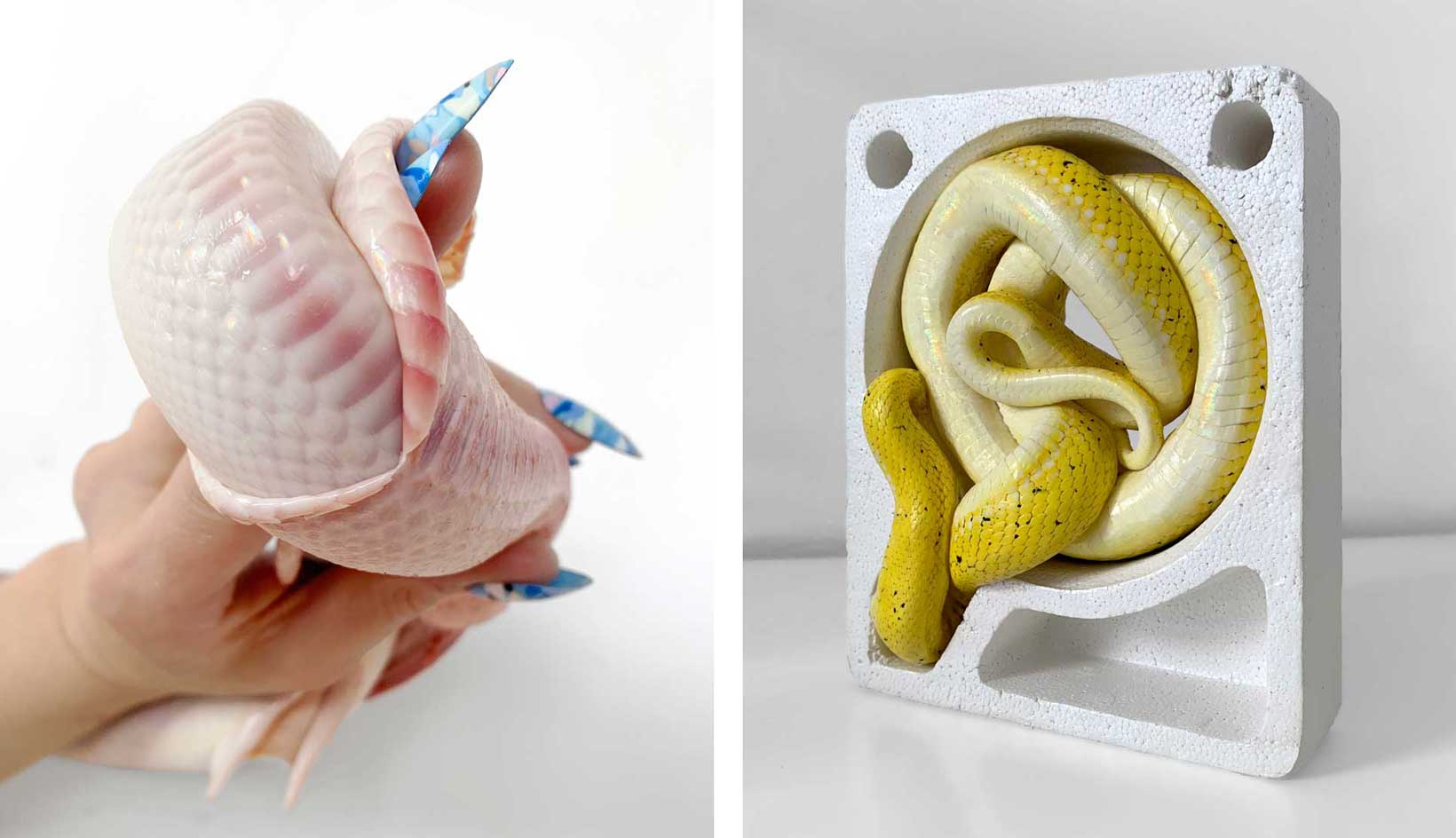
Polly Morgan’s affinity with taxidermy began in her 20s. She was looking to furnish her London flat and wanted it to look ‘dead rather than alive’. Unable to find what she was looking for, she took matters into her own hands, starting with a pigeon.
Since then, Morgan has developed a captivating and singular practice of skinning, stuffing, and turning conventional taxidermy on its head, drawn to its trompe l'oeil qualities over its macabre connotations.
In the early days, Morgan trawled pet shops, farms and big bird fairs to maintain her inventory, all of which had died of natural causes or experienced unpreventable deaths. Before long, she began turning art world heads with her distinctive, surrealist brand of taxidermy and has since built up a network of clients who supply a steady stream of creatures for her work. Among her most striking work is a pig carcass with mushrooms sprouting from its innards, and a brood of chicks rearing their heads from a telephone receiver.
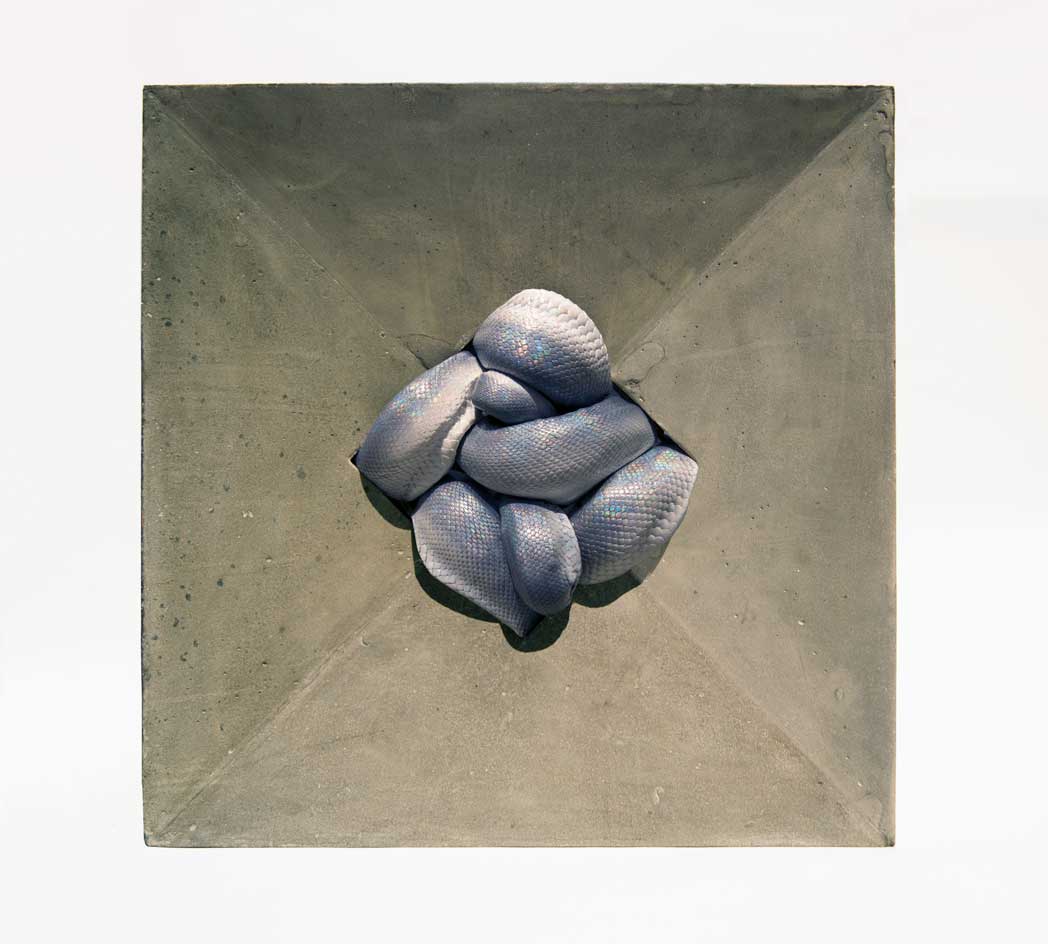
Understand your Audience, 2020
For her latest show, ‘How to Behave at Home’ at The Bomb Factory, Morgan is looking inwards. The show’s title is taken from a chapter of the Victorian book, The Ladies’ Book of Etiquette and Manual of Politeness by Florence Hartley. ‘I began to see etiquette as being a metaphorical strait-jacket, [as much] now as then.’
Social media, the Covid-19 pandemic and our new overfamiliarity with home provide the backdrop for this series of abstract sculptures. ‘I was interested to see how people's Instagram feeds would change, with no parties to attend or events to promote; would they let the veneer slip or turn to a new kind of boastfulness?’ she asks.
To illustrate this, Morgan turned to ‘veneers’: superior surfaces concealing something supposedly inferior. ‘This chimed with a lot of the subjects I was thinking about; specifically how we curate our online lives by careful selection or filters,’ she reflects. ‘For years I had been peeling back the skins of animals and taxidermy seemed a good metaphor for artifice vs. truth.’
RELATED STORY
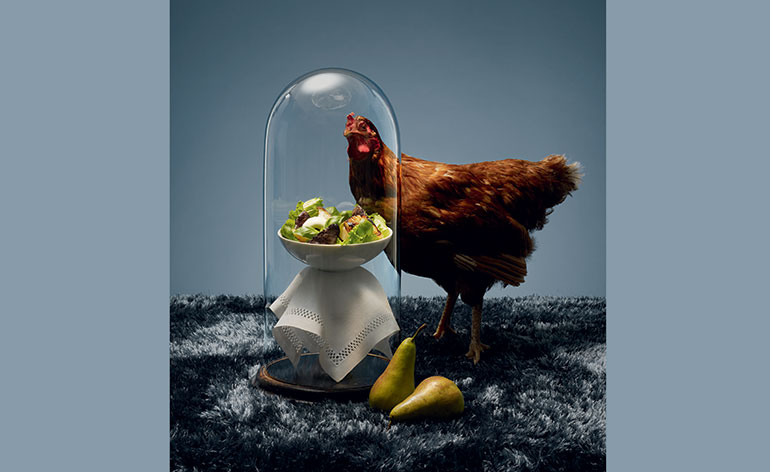
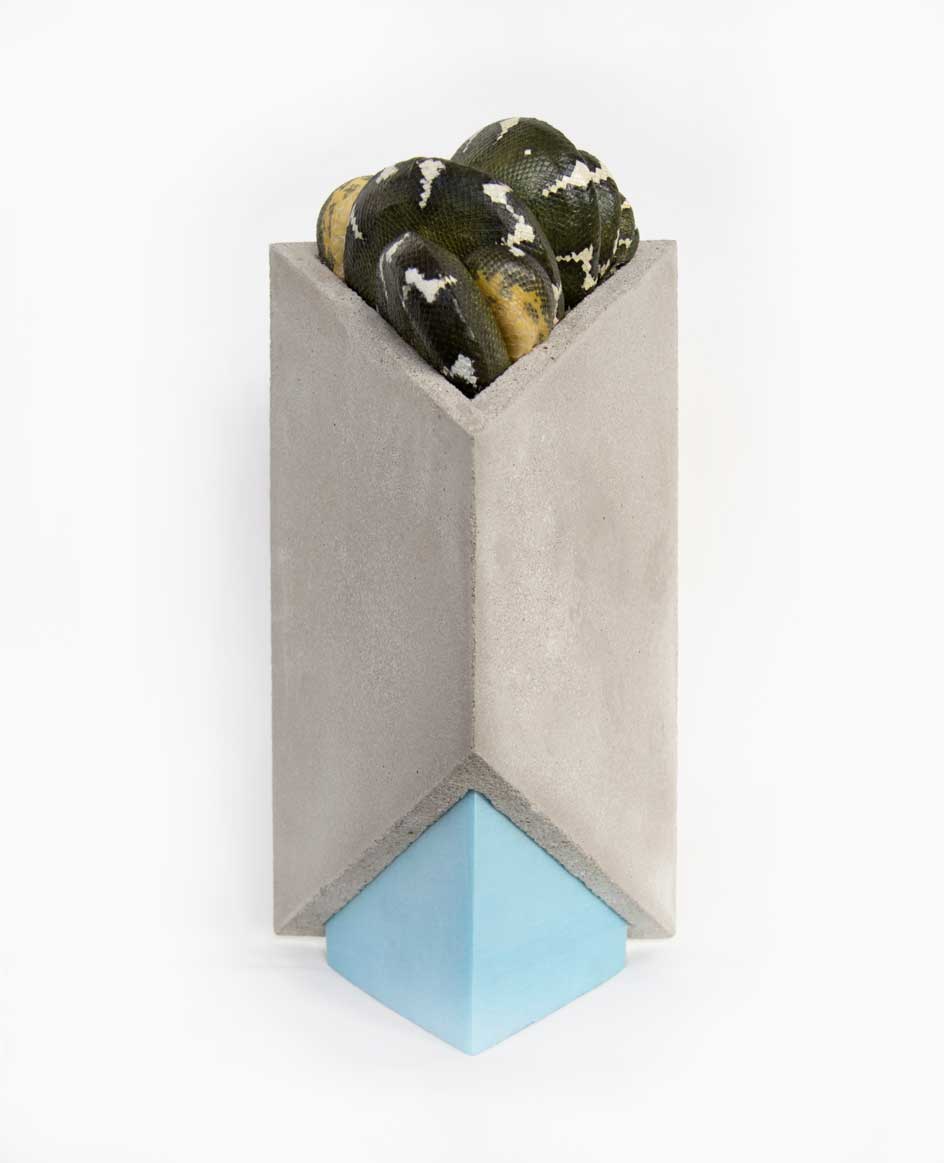
Every other Dance, 2018
The works see brutalist blocks, concrete slabs and polystyrene packaging create corset-like constructions from which highly-decorative snakes spill, contort and rupture from the cavities. ‘I use the snakes to represent excess flesh, a metaphor for untamed nature and the impossibility of absolute restraint,’ she explains.
I use the snakes to represent excess flesh, a metaphor for untamed nature and the impossibility of absolute restraint
The show marks a turning point for Morgan, with sculptures of ‘real’ taxidermy hides interspersed with meticulously painted casts of snakes, and the artist hopes viewers won’t spot the difference. ‘I was locked into thinking I must use the skin and it hadn't occurred to me that my work would be improved by painting directly onto a cast, thus creating my own veneers,’ she says. ‘This way I would no longer be limited to the skins of the actual snakes I had been donated, nor would I have to sacrifice the lustre of a fresh snake skin.’
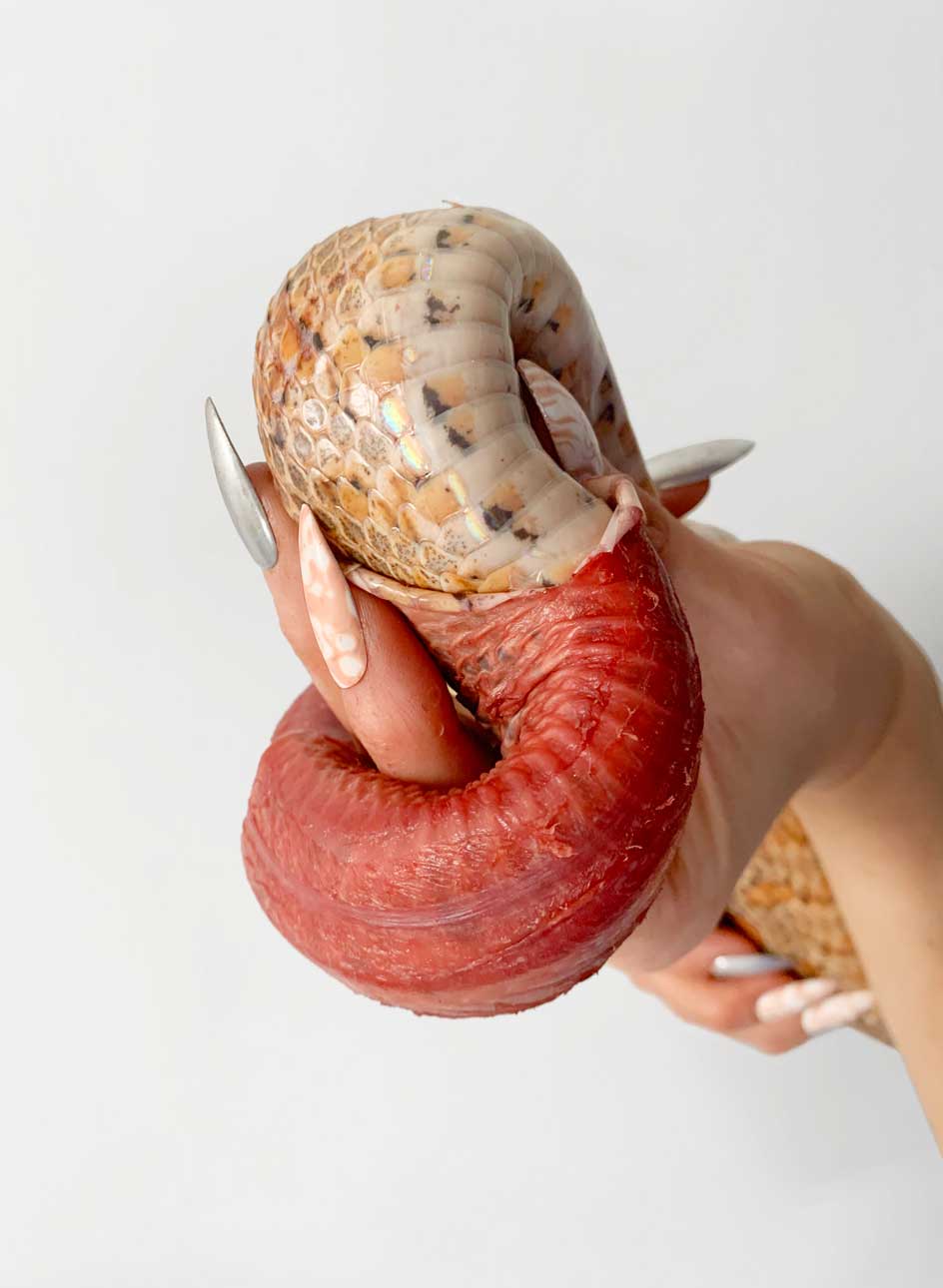
MSQRD, 2020
Morgan spent the best part of a year toying with paints, varnishes and transfers and foils used in nail art. After an ‘uncharacteristic’ trip to get her nails done, she requested an iridescent finish so she could watch and learn from their techniques. For the show, she worked with a nail artist to develop trompe l'oeil marbles, woods and chip foam from gel coats. On the gallery walls are a series of large format photographs titled after Instagram filters. Here, hands with glitzy acrylic talons peel back snake skins in compositions that are enough to leave viewers in a captivated grimace.
Morgan’s show is an oblique commentary on a rapidly evolving society, where richly-lustred ‘veneers’ are stand-ins for veiled bids at digital authenticity. The austere structures that envelop them are both the ever-changing digital standards that suffocate us, and the cocoons that protect us. ‘How to Behave at Home’ is both an instruction and a question.
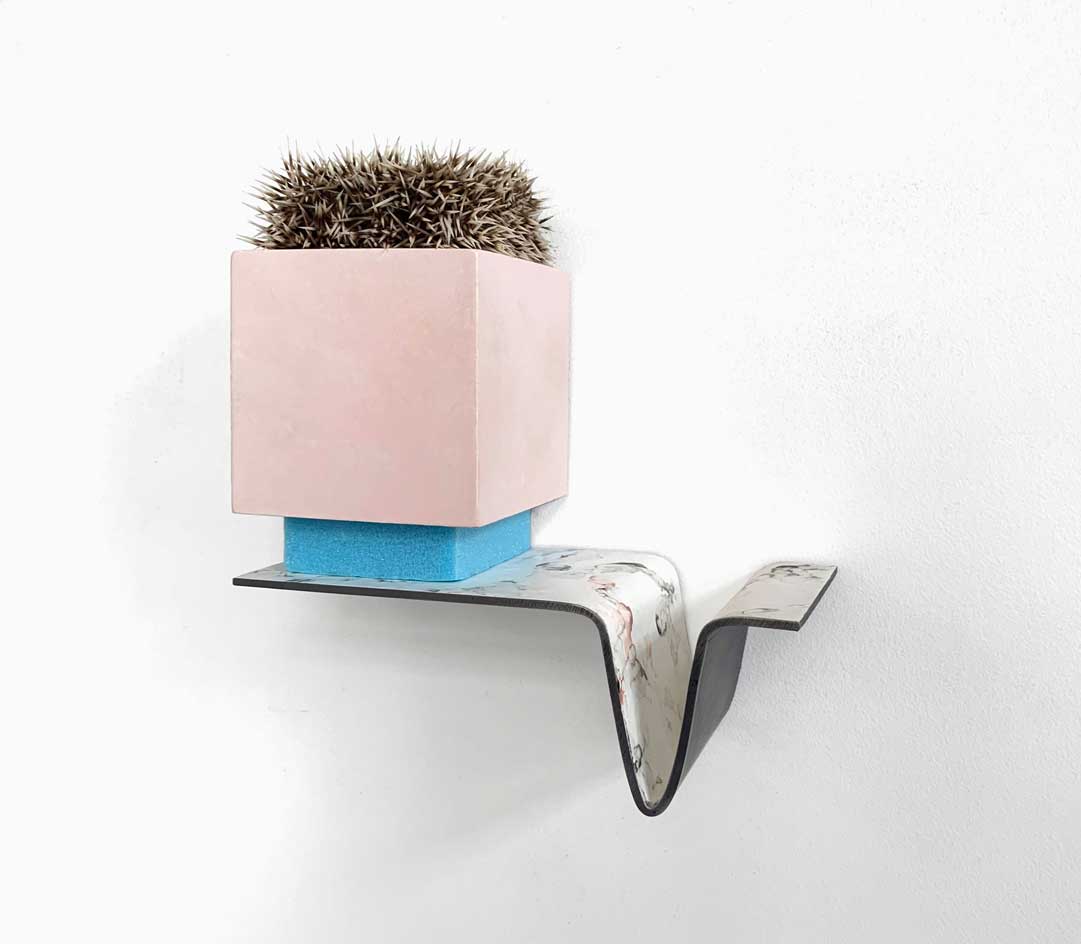
Try Wearing those Colours Too, 2020
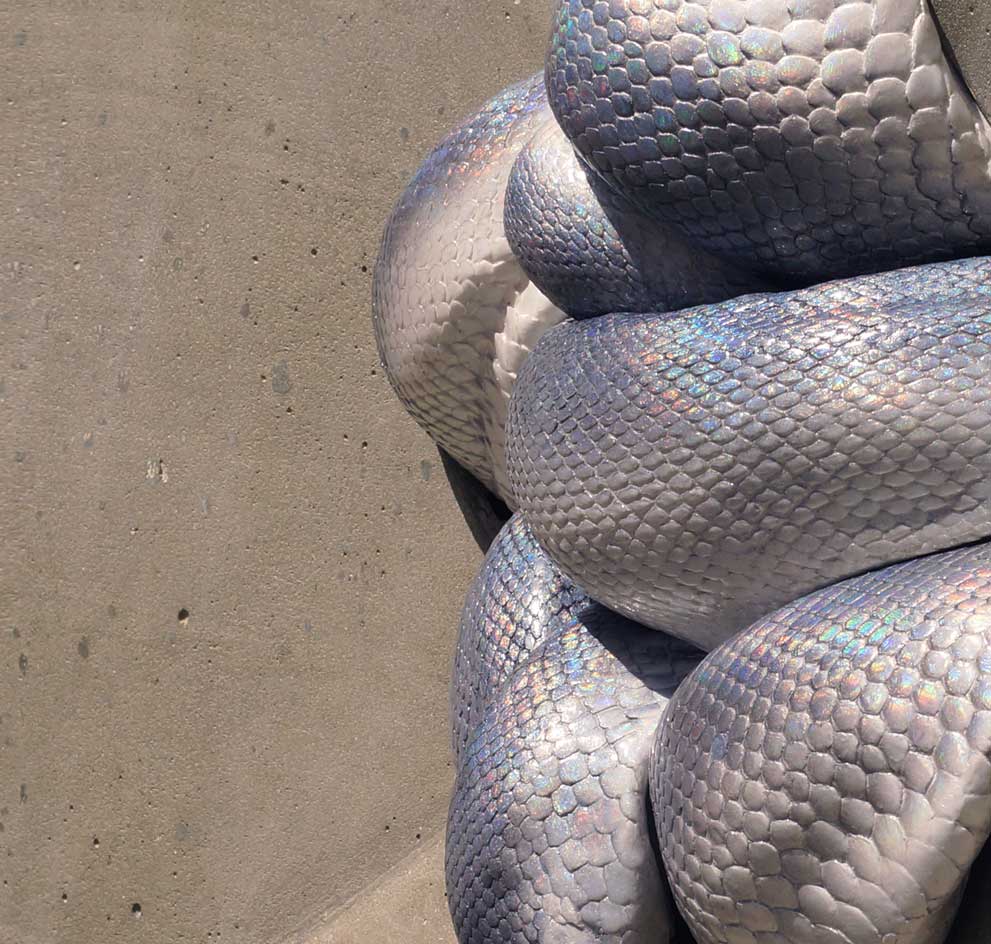
Crop of Understand your Audience, 2020
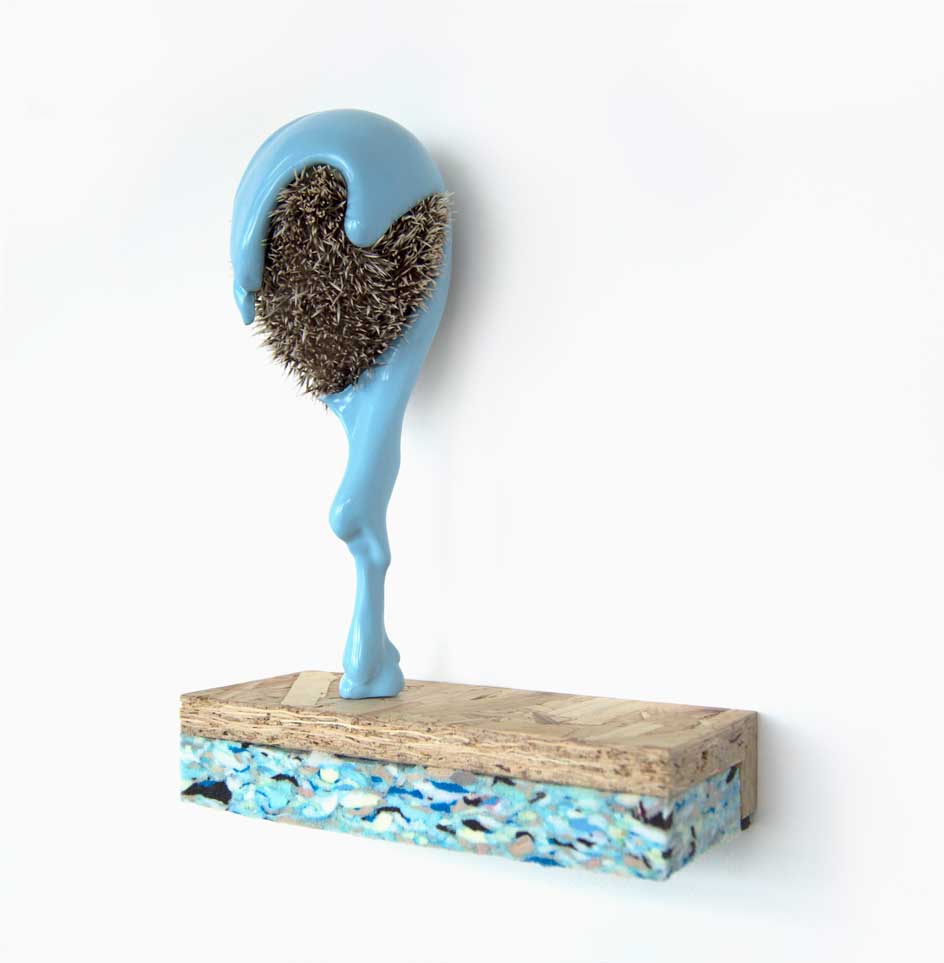
Produce Valuable Content, 2020
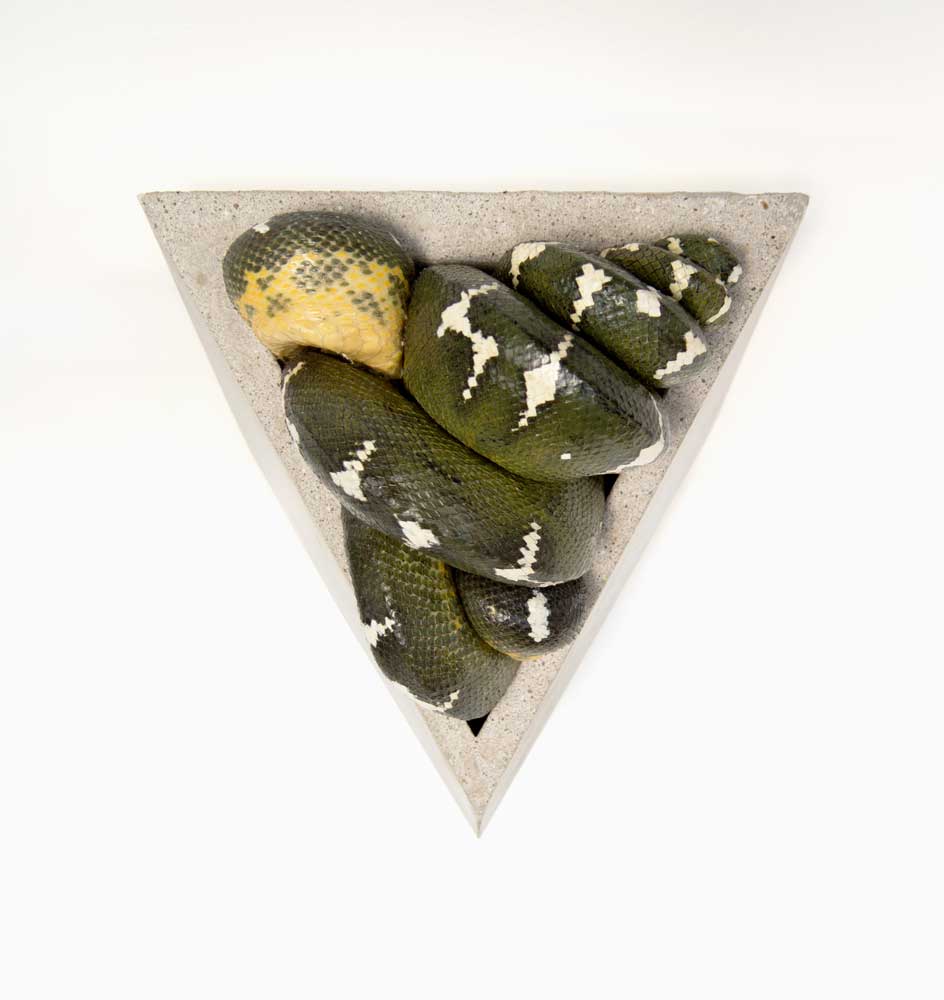
Every other Dance, 2018
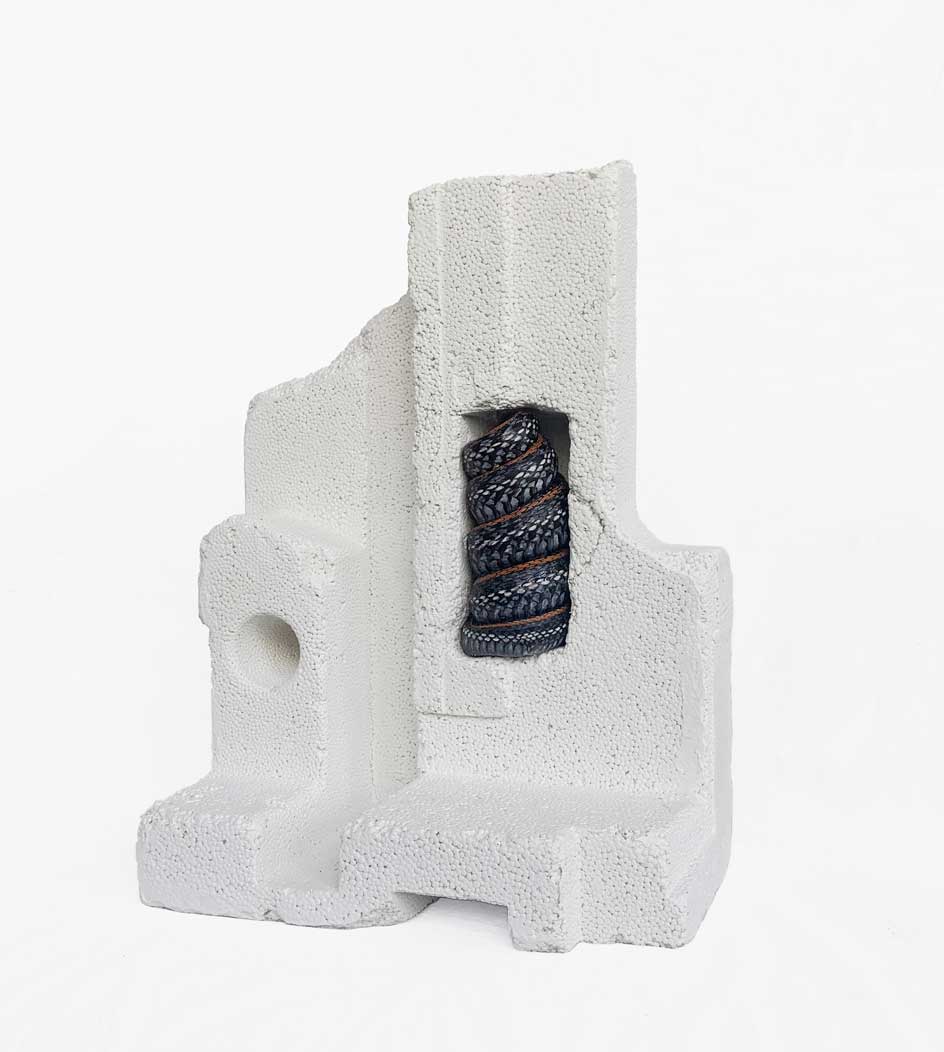
Trace your Route, 2020
INFORMATION
’How to Behave at Home’, 14 October - 2 November, The Bomb Factory Art Foundation. bombfactory.org.uk; pollymorgan.co.uk
Receive our daily digest of inspiration, escapism and design stories from around the world direct to your inbox.
ADDRESS
9-15 Elthorne Rd
London N19 4AJ
Harriet Lloyd-Smith was the Arts Editor of Wallpaper*, responsible for the art pages across digital and print, including profiles, exhibition reviews, and contemporary art collaborations. She started at Wallpaper* in 2017 and has written for leading contemporary art publications, auction houses and arts charities, and lectured on review writing and art journalism. When she’s not writing about art, she’s making her own.
-
 This cult Los Angeles pop-up restaurant now has a permanent address
This cult Los Angeles pop-up restaurant now has a permanent addressChef Brian Baik’s Corridor 109 makes its permanent debut in Melrose Hill. No surprise, it's now one of the hardest tables in town to book
-
 French bistro restaurant Maset channels the ease of the Mediterranean in London
French bistro restaurant Maset channels the ease of the Mediterranean in LondonThis Marylebone restaurant is shaped by the coastal flavours, materials and rhythms of southern France
-
 How ethical is Google Street View, asks Jon Rafman in Copenhagen
How ethical is Google Street View, asks Jon Rafman in CopenhagenIn 'Report a Concern - the Nine Eyes Archives' at Louisiana Museum of Art, Copenhagen, Jon Rafman considers technology's existential implications
-
 Out of office: The Wallpaper* editors’ picks of the week
Out of office: The Wallpaper* editors’ picks of the weekFar from slowing down for the festive season, the Wallpaper* team is in full swing, hopping from events to openings this week. Sometimes work can feel like play – and we also had time for some festive cocktails and cinematic releases
-
 The Barbican is undergoing a huge revamp. Here’s what we know
The Barbican is undergoing a huge revamp. Here’s what we knowThe Barbican Centre is set to close in June 2028 for a year as part of a huge restoration plan to future-proof the brutalist Grade II-listed site
-
 Out of office: The Wallpaper* editors’ picks of the week
Out of office: The Wallpaper* editors’ picks of the weekIt’s wet, windy and wintry and, this week, the Wallpaper* team craved moments of escape. We found it in memories of the Mediterranean, flavours of Mexico, and immersions in the worlds of music and art
-
 Each mundane object tells a story at Pace’s tribute to the everyday
Each mundane object tells a story at Pace’s tribute to the everydayIn a group exhibition, ‘Monument to the Unimportant’, artists give the seemingly insignificant – from discarded clothes to weeds in cracks – a longer look
-
 Out of office: The Wallpaper* editors’ picks of the week
Out of office: The Wallpaper* editors’ picks of the weekThis week, the Wallpaper* team had its finger on the pulse of architecture, interiors and fashion – while also scooping the latest on the Radiohead reunion and London’s buzziest pizza
-
 Out of office: The Wallpaper* editors’ picks of the week
Out of office: The Wallpaper* editors’ picks of the weekIt’s been a week of escapism: daydreams of Ghana sparked by lively local projects, glimpses of Tokyo on nostalgic film rolls, and a charming foray into the heart of Christmas as the festive season kicks off in earnest
-
 Wes Anderson at the Design Museum celebrates an obsessive attention to detail
Wes Anderson at the Design Museum celebrates an obsessive attention to detail‘Wes Anderson: The Archives’ pays tribute to the American film director’s career – expect props and puppets aplenty in this comprehensive London retrospective
-
 Meet Eva Helene Pade, the emerging artist redefining figurative painting
Meet Eva Helene Pade, the emerging artist redefining figurative paintingPade’s dreamlike figures in a crowd are currently on show at Thaddaeus Ropac London; she tells us about her need ‘to capture movements especially’